Do you wish to practice self-sufficiency and grow and preserve your own vegetables — but are concerned that you have little time to tend a garden? No worries! There are lots of easy-to-grow vegetables that won’t take too much time and effort to grow successfully.
Many homesteaders new to vegetable gardening are intimidated by the task of starting a garden. However, gardening can be quite simple if you plant the right crops; those that yield a tasty product your family enjoys and don’t require gardening experience or a ton of work.
Some of the easiest vegetables to grow include radishes, cucumbers, lettuce, zucchini, beets, tomatoes, peppers, and green beans. These are all great choices for those of us who live in an area with a short growing season.
Spinach
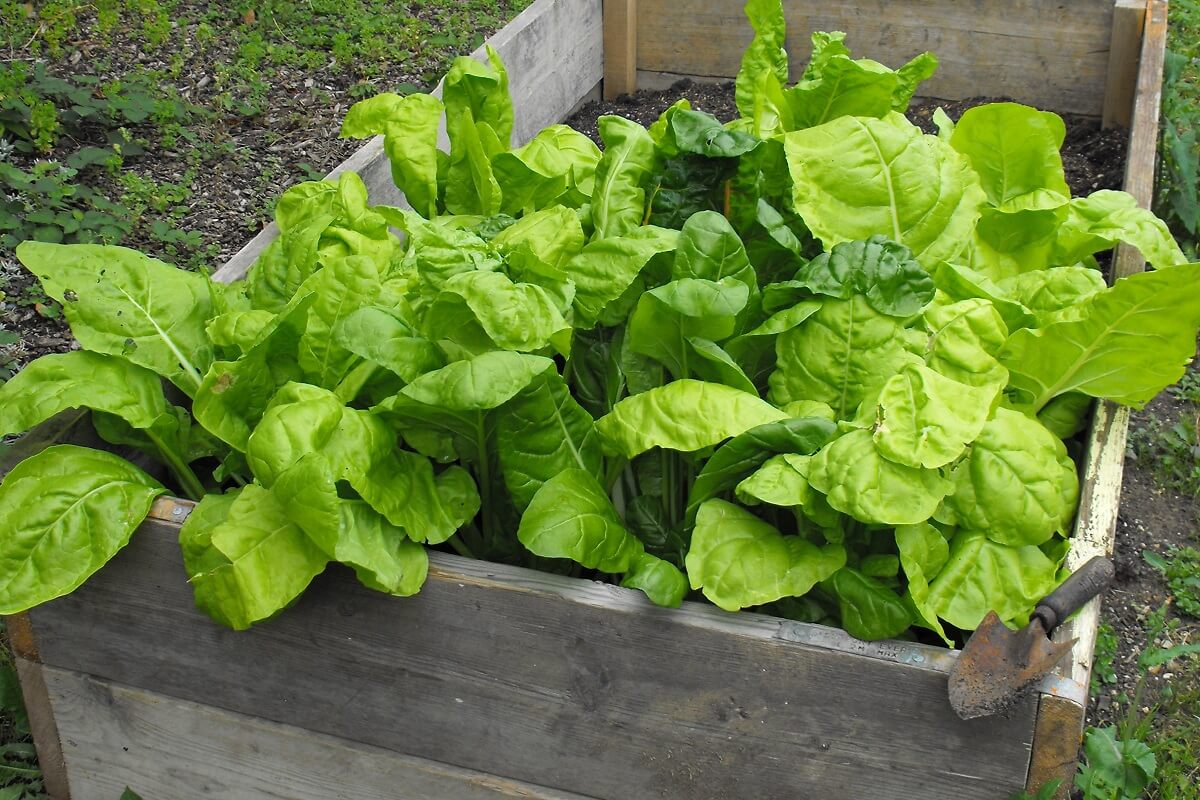
- Germination Rate: 15-20 days
- Time to Maturity: 40-50 days
- Growing Conditions: Cold-tolerant, full or partial sun
When it comes to ranking the easiest vegetables to grow, spinach takes first place. Spinach is a harvest and come-again crop, meaning you can harvest fresh spinach all summer long. To encourage new growth, don’t remove more than half of the leaves from a plant when harvesting. Once planted, your spinach patch should have a 3 to 5-year viability.
Related Post: Wild Spinach
Spinach seeds are sown directly into soil in early spring. When seedlings are 3 to 4 inches tall, harvest some of the plants for a spring salad to make room for the remaining spinach plants to mature. Baby greens can be harvested in as little as 10 days.
As a cool-season crop, spinach is cold tolerant. In fact, spinach can withstand the effects of temperatures down to 15 degrees Fahrenheit. Spinach is also disease resistant and drought tolerant. There are three distinct types of spinach: semi-savoy, savoy, and flat or smooth leaf spinach. Savoy varieties of spinach present curly rippled leaves.
Related Post: Growing Spinach
Experienced homesteaders suggest planting flat or smooth leaf spinach as it is easier to clean. Cabbage, cauliflower, broccoli, and strawberries are the best companion plants for spinach.
Radishes
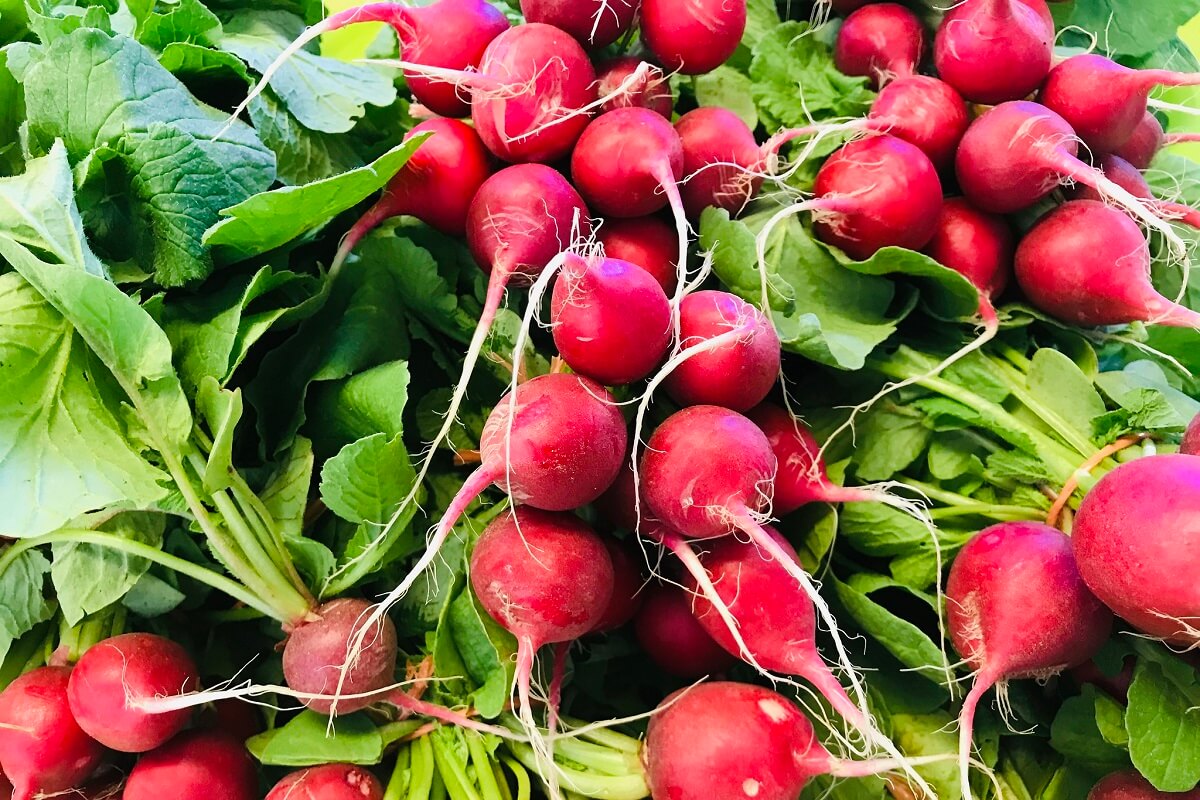
- Germination Rate: 4-6 days
- Time to Maturity: 6 weeks
- Growing Conditions: Full-sun, sandy, well-drained soil
Of all the crops you can plant in the homestead garden, radishes are one of the easiest vegetables to grow and one of the fastest to reach maturity. The radish is adaptable to almost any type of soil and has a short growing period from sowing to maturity.
There are many different types of radishes that vary by shape, size, color, and taste. Some radish varieties are mild while others present a strong, spicy flavor. Radishes are graded as globe, oblong, oval, long, and extra long. Radishes also vary in color from white, yellow, pink, and bright red to a dark purple. Because they are so easy to grow and require such little space, it’s fun to experiment and plant several different varieties.
Related Post: How To Store Radishes
A cool-season crop, radishes prefer cool, moist soil. Radishes become pungent and pithy when cultivated in the warm soils of summer. They flourish in a light, sandy, well-drained soil which allows even root development. They love the sun, so select a planting location in full sun with good drainage.
For homesteaders seeking to generate a bit of extra income, radishes are a fast seller at local markets. Radishes are eaten fresh, dehydrated, or pickled for preservation.
Summer Squash

- Germination Rate: 6-10 days
- Time to Maturity: 50-60 days
- Growing Conditions: Full sun, well-drained, nutrient-rich soil
Summer squash and zucchini are also some of the easiest vegetables to grow. Sow seeds directly into the soil as soon as the ground warms in the spring. The seeds are large, so it is easy to space plants which saves the time of thinning later. If you want to get a jump on the growing season, seedlings are available for sale at local home and garden outlets. Beans and peas are the best companion plants for squash.
Cucumbers

- Germination Rate: 4-10 days
- Time to Maturity: 48-60 days
- Growing Conditions: Acidic soil, full sun
An easy-to-grow vining plant, cucumbers can be planted directly in the garden, started indoors, or purchased as seedlings. There are dozens of different varieties of cucumbers, all of which are members of the gourd family Cucurbitaceae.
Once established in the garden, cucumber plants require little care. They do, however, require plenty of sunshine, water, and support. Although cucumbers can manage in partial shade, they grow best in a full-sun location. There are three main types of cucumbers: slicing, burpless, and pickling cucumbers or gherkins.
Related Post: Growing Cucumbers
Grow cucumbers along a garden fence line or plant as a companion to corn. The corn stalks provide excellent support for the fast maturing cucumber vines. Cucumbers are ideal companion plants for carrots, radishes, cauliflower, cabbage, and tomatoes.
Green Beans
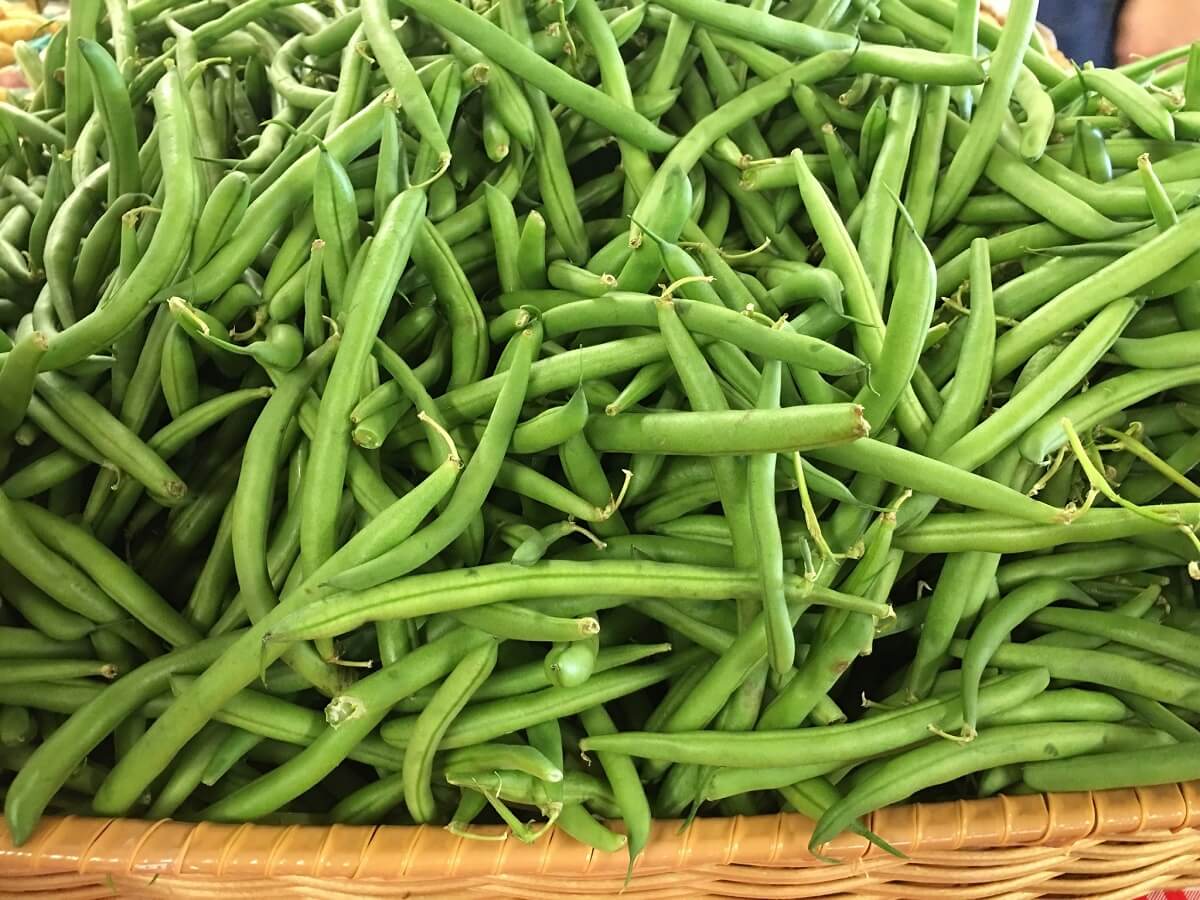
- Germination Rate: 8-12 days
- Time to Maturity: 55-65 days
- Growing Conditions: Sandy, well-drained soil, full sun
There are two types of green beans: bush beans and runner beans. Within these types of green beans, there are dozens of varieties both stringed and stringless. Green bean seeds are sown directly into the garden in early spring.
Because of the substantial size of the seed, green beans are an excellent choice for teaching children about gardening. Green bean seeds are of a size that allows small children to easily grip the seed. Kids find it fun to plant, water, nurture, and harvest green beans. Carrots, celery, tomatoes, and cucumbers are excellent companion plants for green beans.
Peppers
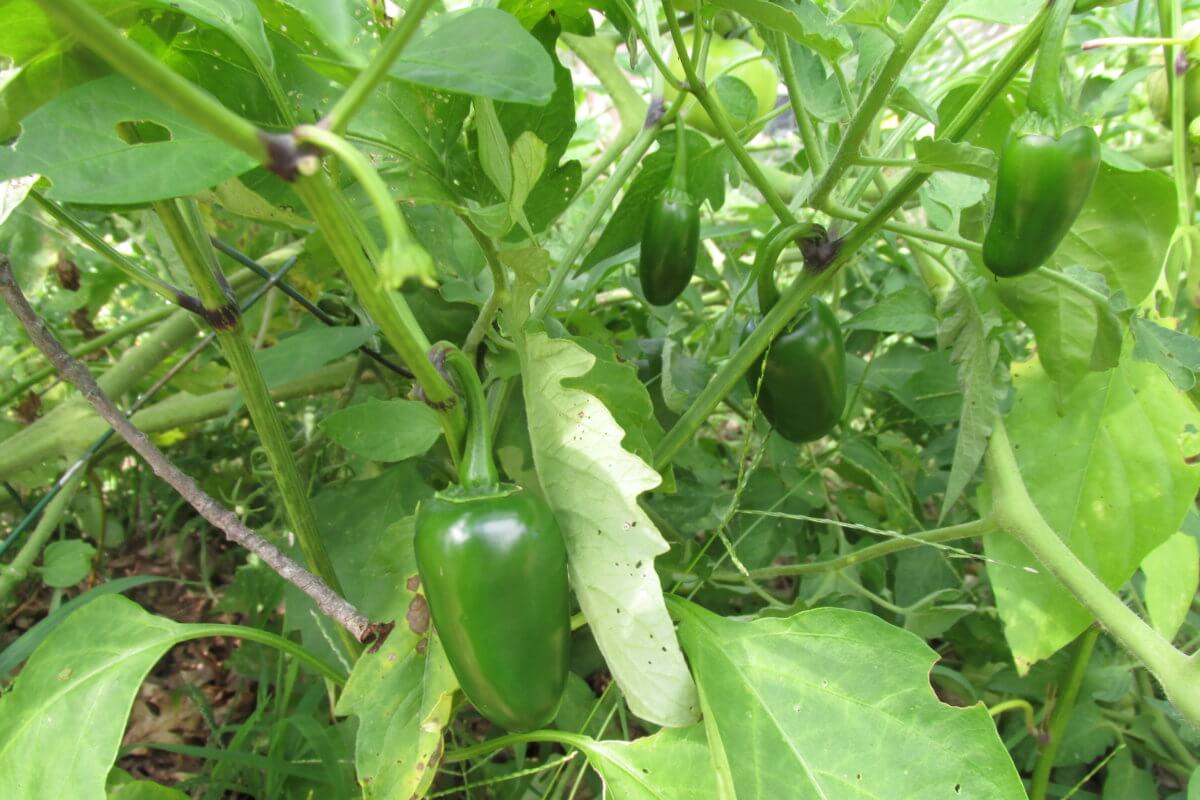
- Germination Rate: 3-12 days
- Time to Maturity: > 50 days
- Growing Conditions: Full sun, nutrient-rich soil
All varieties of peppers from sweet baby bells to the hottest habanero, are easy to grow. The only things peppers require are nutrient-rich soil, plenty of sunshine, and plenty of water. Peppers love the heat and do well in the hottest spot in the homestead.
Plant beside a rock or concrete wall that reflects the heat or in any spot that receives sun from dawn until dark. Peppers are great companion plants for garlic, chives, onions, and celery.
Lettuce
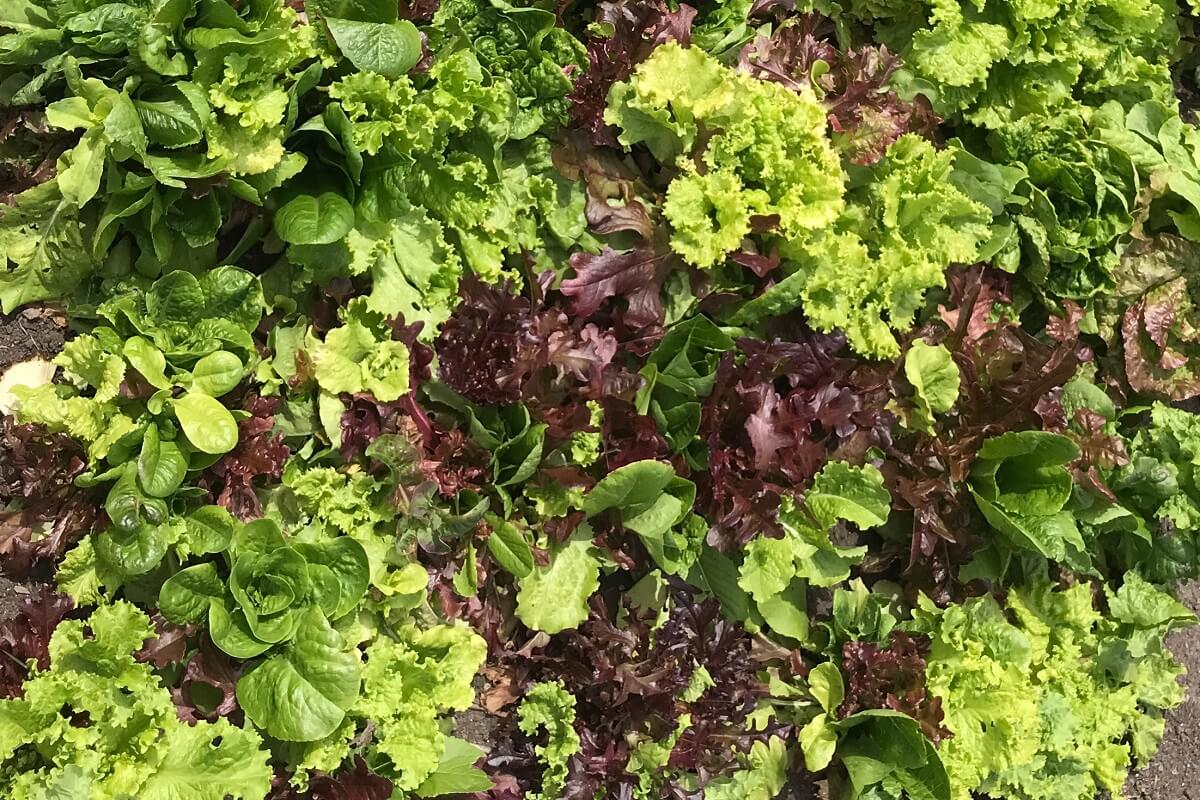
- Germination Rate: 2-10 days
- Time to Maturity: 48-62 days
- Growing Conditions: Partial sun, cold-tolerant, light, well-drained soil
Lettuce is another cool-season crop that grows best in the spring and fall. Because it is a cool-weather crop, lettuce can handle a bit of frost. If you live in the United States Plant Hardiness Zones 6 to 11, you can grow lettuce year-round. There are endless varieties of lettuce that fall into five distinct types: leaf lettuce, butterhead or Bibb, crisphead, cos or romaine, and stem lettuce.
Related Post: Growing Lettuce
All varieties of lettuce are easy to grow and mature quickly. Lettuce seed (like radish seed) is sown directly into the soil. Lettuce grows best in a spot with morning sun and afternoon shade. It is delicate and cannot tolerate the noontime sun. Lettuce is an excellent companion plant for carrots, radishes, melons, and beets.
General Vegetable Growing Tips
All of the easiest vegetables to grow require plenty of space. Prepare the planting location by removing rocks, roots, and weeds. As vegetable plants germinate and begin to mature, thin the plants to allow the strongest space to develop. Vegetable plants should be at least 4 to 6 inches apart.
Choose a well-drained location with plenty of morning sun. Keep in mind that delicate vegetables (such as lettuce) will wilt in the heat of the noonday sun.
Monitor moisture levels in the garden. Vegetables require evenly moist, well-drained soil. Do not allow the soil to dry out between waterings. Vegetables require at least 1 inch of water per week. When watering, make sure the first 6 inches of soil are dampened.
Use a rain gauge to ensure your garden plot receives adequate water either in the form of rainfall or supplemented by your efforts.
What do you consider some of the easiest vegetables to grow? Let us know in the comments below!
References:
- Growing Radishes, NSW – Department of Primary Industries
- Growing Radishes in the Home Garden, University of Minnesota Extension
- Growing Lettuce Year Round, UC Master Gardeners
- Growing Spinach, Michigan State University Extension










































Leave a Reply